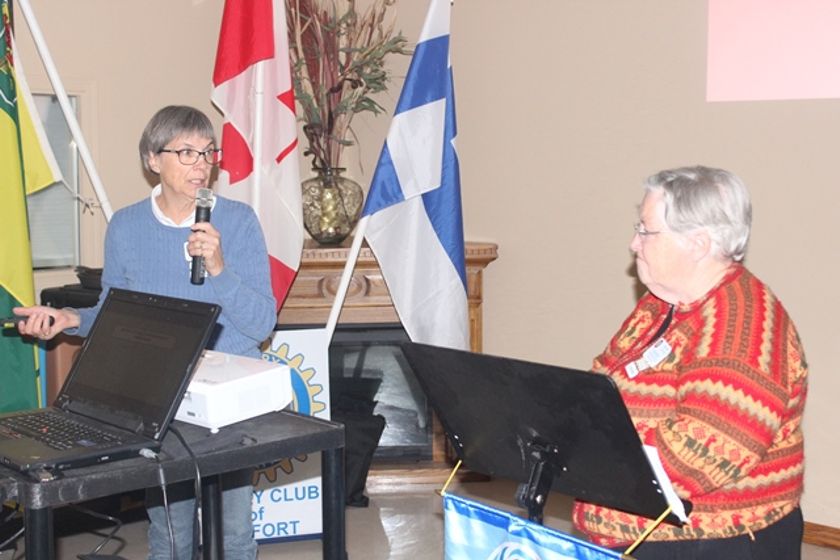Two members of the Rotary Club of Melfort (Saskatchewan, Canada – D 5550) recently had a special trip where they learned about one of the Rotary programmes.

Gailmarie Anderson and Mona Graham travelled to Guatemala to learn about the Ripple Effect in early October.
At the Rotary’s regular meeting on Tuesday, November 13, they shared what the experience was like.
“It was a very enlightening experience I think we both learned a lot,” Anderson said.
“We saw extreme poverty and we saw extreme wealth,” she added.
The pair was in Guatemala from October 2 to 14.
“It really affected us and I think the memories of that trip will stay for us for a long time.”
Graham and Anderson shared an educational part about the Ripple Effect because though the Rotary had been contributing for many years the group maybe did not know what it was.
The Ripple Effect started with the Kenora Rotary.
There is both a Canadian and a Guatemalan Ripple Effect Committee.
Rotary Club Norte in Guatemala is the lead group and works with other groups on literacy in schools.
The committee meets with the Ministry of Education to decide where schools built will go and then communities need to agree.
“They have 87 schools in Guatemala with Ripple Effect, I mean it’s a drop in the bucket. There are over 3,000 public schools but it’s a tremendous difference for those 87 communities,” Anderson said.
The Ripple Effect moves through each community as they rally around the new schools.
The programme also provides scholarships to each community.
“The purpose of the programme is to provide an opportunity to children in challenging environments through promoting literacy and education,” Graham said.
A stated goal is to promote one community at a time until the country is free from poverty.
Since it began in 1989 over 85 schools have been built in rural areas.
Graham explained that another important aspect is the construction of bathrooms as the poverty is to the point that the children don’t have sanitary bathrooms.
The programme also constructs playgrounds and kitchens and computer classrooms.
They are also installing water filtration systems.
The Rotary also supports teachers in Guatemala through the programme.
The pair met with teacher trainers, the dean of the school and future teachers while in the country.
“One more thing about the schools, they operate with global grants and they get matched by the governments, so when we contribute our moneys get matched,” Anderson said.
The terrain in the county is full of hills and Anderson missed one day of school visits because of altitude sickness.
In their presentation they described each day of their trip and meeting with various Rotary people and tours of the country.
They met students, teachers and fellow Rotary members involved in the Ripple Effect programme.
They attended Rotary meetings across the country and toured many of the locations of Ripple Effect schools in Guatemala.
Following the half-hour presentation Anderson and Graham took questions from what was a well-attended meeting.
Source: Melfort Journal





